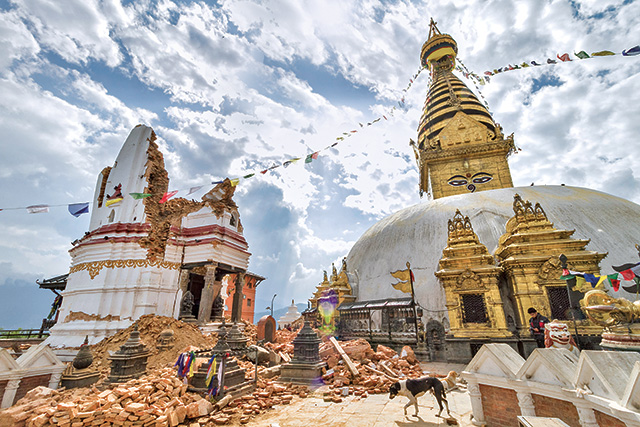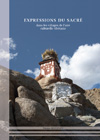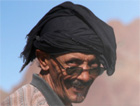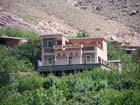Népal : quid de la reconstruction des monuments ?
- Le 24/09/2015
- 0 commentaire
Mon amie Josiane, avec laquelle j'ai usé mes fonds de culottes pendant trois ans à l'INALCO en cours de népali et qui se trouve actuellement à Katmandou hébergée dans une famille Néwar me transmet cet article. Je vous invite à en prendre connaissance si vous vous posez des questions sur la problématique de la reconstruction des monuments détruits par le séisme du 25 avril 2015. Vous apprendrez, si vous ne le saviez pas déjà, l'importance de ces temples dans la vie de quartier autour desquels s'organise la vie communautaire. Gérad Toffin, l'ethnologue français spécialiste de l'ethnie Néwar, a abondamment parlé de ces guthis. L'article de presse est rédigé en anglais mais vous pouvez le faire traduire en français par Google (même si le résultat ressemble à du "petit nègre" -quelle horrible expression !-, vous pourrez appréhender une grande partie de cette problématique.

A Monumental Rebuild
Posted: 21 Sep 2015 05:00 PM PDT on ecs.com.np
By Iona Liddell
A few of the world heritage sites in Kathmandu valley were damaged by the Spring 2015 earthquakes and aftershocks, but a rebuild plan is in place, giving visitors and locals alike a unique opportunity over the next six years to see exactly how such wondrous buildings are made, whilst enjoying the living cultures that exist around these sites. Kathmandu Valley is reknowned for its cultural heritage, most famously rendered in its sacred sites - the Buddhist centres of Swyambhu and Boudha, the Hindu temple complexes of Pasupathinath and Changu Narayan, and the Durbar Squares of Patan, Bhaktapur and Hanuman Dhoka. In 1979 these seven groups of monuments were officially recognized as World Heritage Sites by UNESCO, meeting the criteria of demonstrating significant stages in human history, being a unique testimony to living cultural traditions and being directly associated with events, living traditions, ideas, beliefs and artistic and literary works.
In Spring 2015 earthquakes, these proud monuments and the communities around them suffered a reeling blow, but they are slowly bouncing back. Three months on, archaeologists, architects and artisans are taking stock. The rush to rescue pieces, create inventories of what was found and secure temples before the monsoon rains could wreak a second layer of damage. These experts have turned to planning the years ahead, in order to stabilize and rebuild the valley’s cultural heart. This throws up interesting issues, which will need to be grappled with and overcome, but all experts are unanimous in their support for visitors to come, enjoy watching the building process and perhaps even get more involved.

The Government of Nepal’s Department of Archaeology (DoA) is taking the lead on the recovery process, supported by UNESCO. The DoA’s Suresh Suras Shrestha explains, “It’s a unique opportunity for tourists, which you wouldn’t see in other parts of the world. There they would put fences up and keep you out, but here we want to have the sites be like an open workshop on traditional skills of the valley, for tourists and Nepalis alike to see.” Quirks of history will emerge from the rubble. David Andolfatto of UNESCO supports the rehabilitation of Swyambhu. In tidying up the site before the rains, Andolfatto and his team uncovered hundreds of tsha-tshas, small clay sculptures of deities that are traditionally placed within Buddhist stupas. What caught their interest was that some were Tibetan and some were Nepali, thus indicating the involvement of Tibetans in 19th century construction in Kathmandu, which had previously been suggested but never materially proven. What other stories of old we will learn from the temples will remain to be seen as the rebuilding gets underway.
The process will not be without struggle, but in this there are issues of real interest. The DoA estimates the rebuilding will take between 5 and 7 years - a timescale very dependent on how much funding ultimately comes through. The entire reconstruction of the world heritage sites is likely to cost in the region of USD 100 million. It is not just the money that matters. Nepal’s current building bylaws stipulate that no modern materials may be used in reconstruction. This may please orthodox conservationists, but many experts agree that in order to ensure the structures are earthquake-resilient, reconstruction efforts must aim to blend the old with the best and subtlest of the new. A revision of the by-laws is a pressing task, which the DoA and UNESCO are working on, looking at the nuances of exactly how and which modern materials would be acceptable, if at all.
Rohit Ranjitkar of Kathmandu Valley Preservation Trust believes that for the majority of the people local to the temples, giving the gods a house is what is important, rather than the materials that such a house is made from. Indeed, in the centre of Patan Durbar square a lone lingam stands in the middle of a plinth. The temple around it fell on April 25. Someone has erected a tarpaulin to shelter it from the rain, and the tarpaulin looks like a parasol for the gods, red and with gold fringes. It is out of respect for the people who daily worship there. And worship they do. The god is there, and he has cover.
So it is the conservationists who must worry about how best to re-house the gods - whether the buildings should be erected in identical fashion, or whether retro-fitting is permissible, if not imperative. In previous centuries, there is evidence to suggest that some temples were regularly rebuilt every 60-70 years by communities that understood that wood resting on earth cannot last much longer without becoming dangerously weak with rot. Ranjitkar argues that was the technique of those times, and that in this day and age retrofitting is a necessity and not a break from cultural tradition. In each temple, after all, there are multiple layers of materials, which reflect the people who used the best materials of the times to patch their beloved places of worship. Although this is against some conservation protocols, Ranjitkar argues that it is the way that a lived culture responds in crisis, to give the best and sturdiest to that which is important. Ranjitkar believes people would build wholly concrete temples if they could, given concrete’s wide appeal and recent positive performance in the earthquakes, but he draws the line at that. Instead, he is taking the counsel of Swiss architect and retro-fitting specialist, Dr. Matthias Beckh, as to strengthening designs and techniques that are in tune as far as possible with the original materials. “We call this subtle upgrading,” explains Beckh.
But there is a lot of clearing still to do in places like Swyambhu before reconstruction can be attempted. Indeed the first year of the joint UNESCO-DoA’s seven-year recovery plan is devoted to planning, assessing and clearing only. UNESCO’s Andolfatto said it had been amazing to see so many young Nepali people come out and be so active in guarding their own heritage in the weeks after the earthquake. Others, often tourists, have now joined these volunteers. Andolfatto’s suggestion to anyone who wants to support the reconstruction in Swyambhu would be to sign up with a group such as All Hands and lend a hand by clearing the reconstruction site. Swyambhu is not closed to the public, but Andolfatto worries about people coming to the site en masse - the structure is vulnerable, and the local community still tent-bound. By volunteering, Andolfatto thinks that visitors will be able to make more of a genuine connection both to the people and the place. This is a reminder that there is far more to the Kathmandu valley world heritage sites than just the temples. These are lived spaces, after all. Lovers sit in the temple eves, children feed the pigeons, old men sit in rows on benches and slurp tea in time-forged companionship. The Newars, held to be the original inhabitants of the Kathmandu valley and responsible for building many of the temples and the vernacular architecture that surrounds them, are stillhere; living, breathing, speaking Newari, and still wearing their chappals out on the stones of the square. It is their artisans who will be called on to resurrect the temples, to carve and forge and hew from the old and the new. Ranjitkar adds, “The entire Kathmandu Valley is a living heritage site. If you go to Egypt or Rome, you will mainly see tourists at the world heritage sites, but here locals will outnumber you. If you happen to go to Patan Durbar Square at 4am you will already see people worshipping at the temples. We still keep our traditions. We still continue our religious activities.”
It is obvious in the gullies and chowks of Patan that the tangible and intangible heritages rub shoulders. People move, laugh, meet and eat through redbrick landscapes. Festivals are enacted in long-used spaces, both shaped by and shaping each other. There are plans afoot in Patan to make this intangible culture more accessible to outsiders. Prakash Dhakhwa of Dhakhwa House is one of a number of “like-minded” Newars in Patan who see the current situation as an opportunity for Newars to open up further to visitors and allow them to experience in more depth their ways of living. Dhakhwa organizes cooking classes and even religious ceremonies from his converted home and guesthouse in Patan. Anyone can come and learn the almost-taboo skill of raksi (strong spirit) making from his mother.
Newar architect Jiten Shrestha believes these kinds of activities can actually help to keep life in the area. For many Newars who moved out of Patan to larger houses elsewhere, their empty neglected houses were often the most vulnerable during the earthquake. If there was a return of people who saw tourism as a business opportunity and who were willing to showcase and celebrate their culture, chowks could become full of life and laughter again, and could provide incomes for struggling families, or incomes that would persuade those who left to return. Shrestha and Dhakhwa believe it is just as important to maintain the social structures, as it is to preserve the physical ones. Without as many people it is harder to upkeep the temples, or to have a critical mass for community endeavours. This is about recreating an ecosystem of the built and the breathing. The ties between these entities have loosened over the past decades, but they have hope they could be strengthened and that letting outsiders in at this time of refiguring offers a unique way in which to do so.
Himalaya nepal séisme katmandou historique monument
Ajouter un commentaire






































